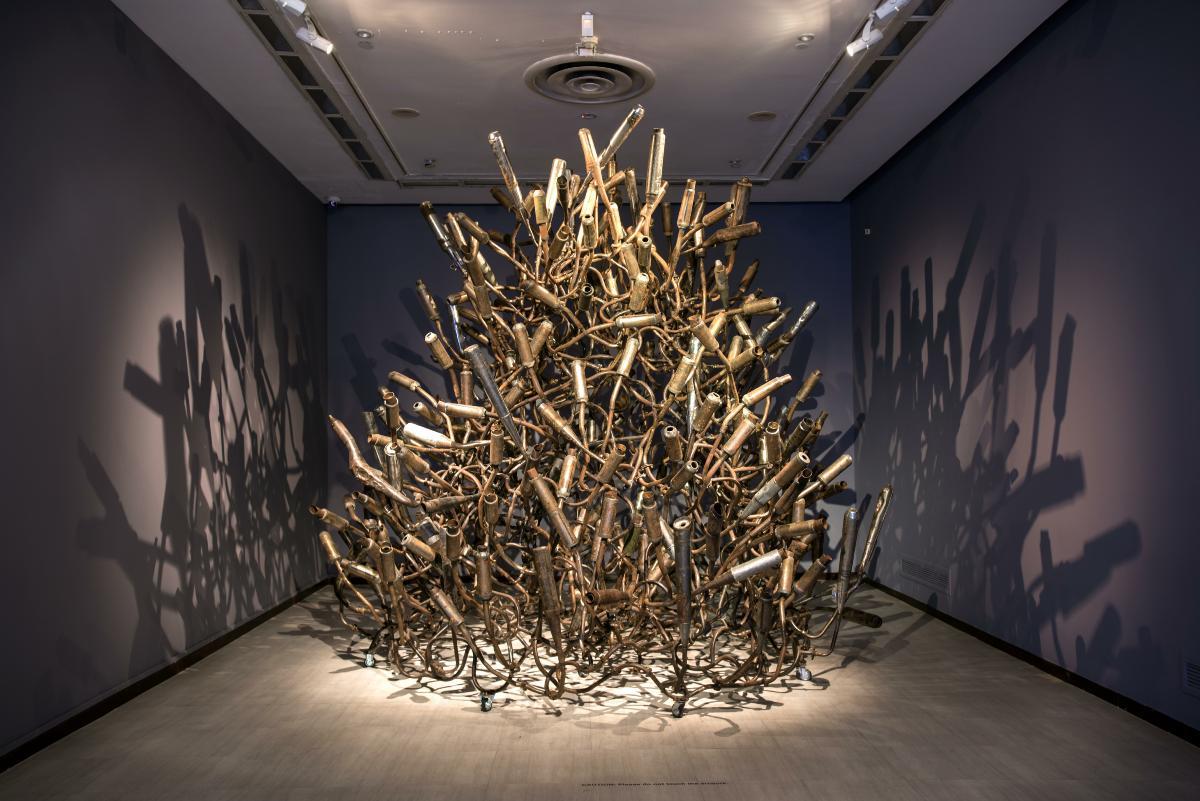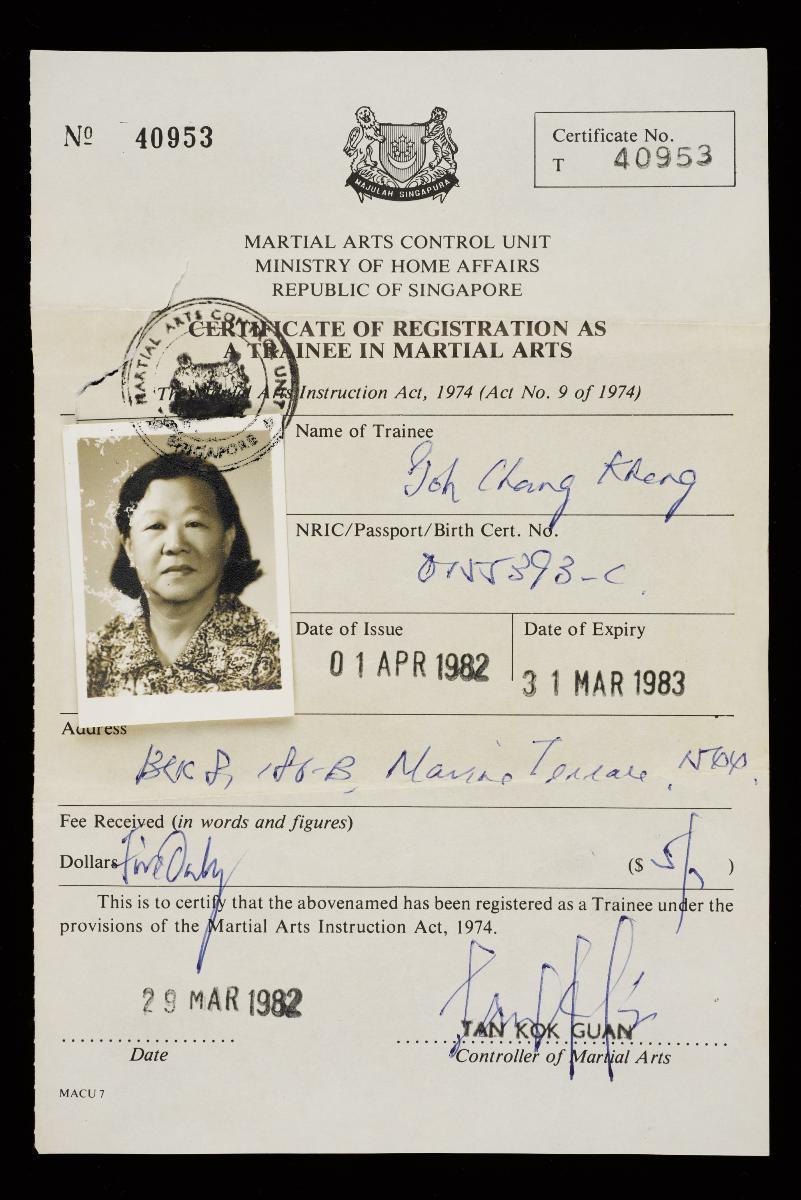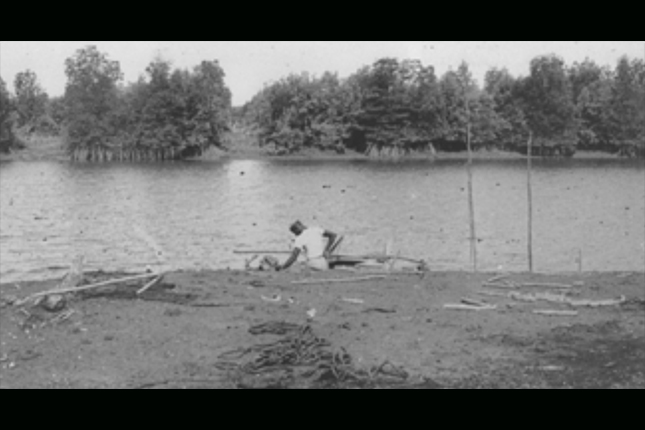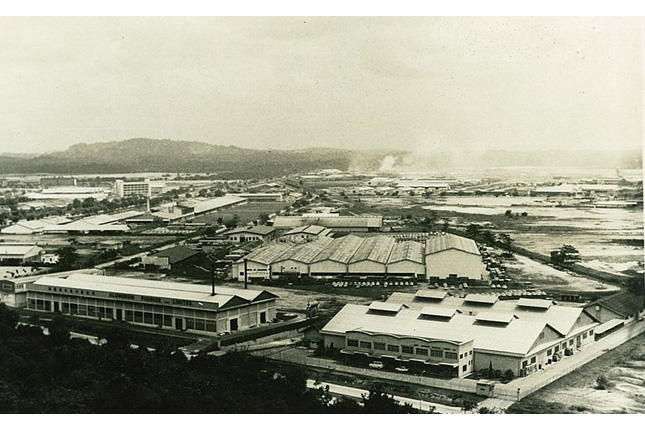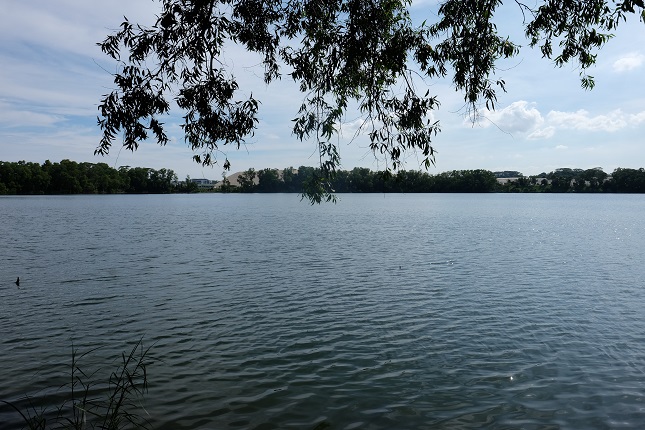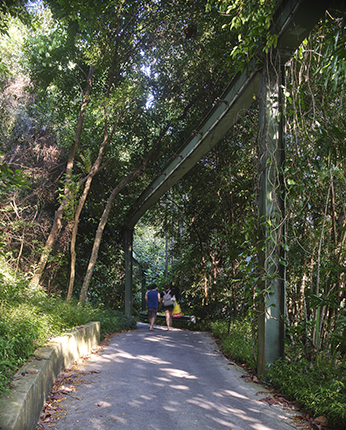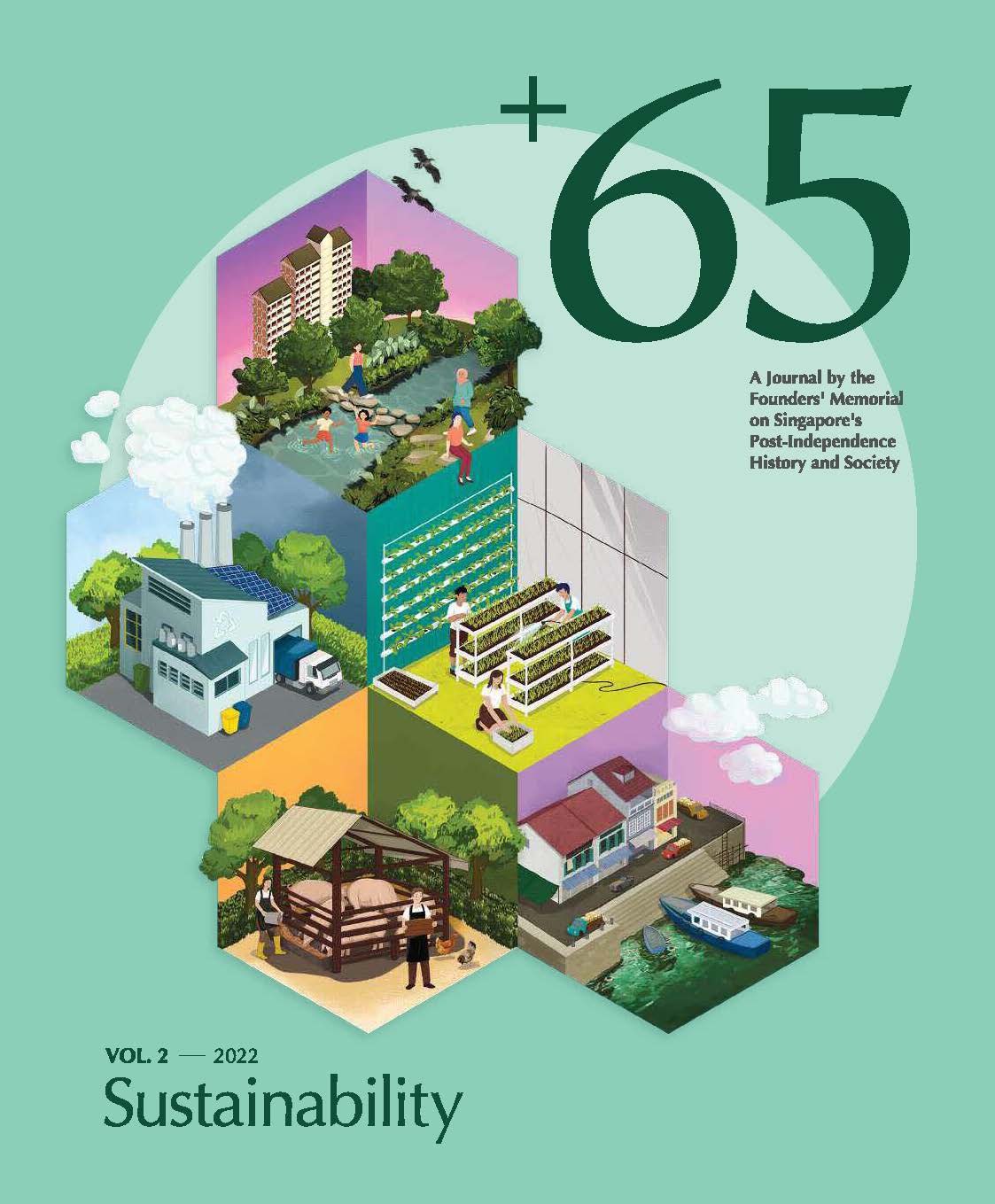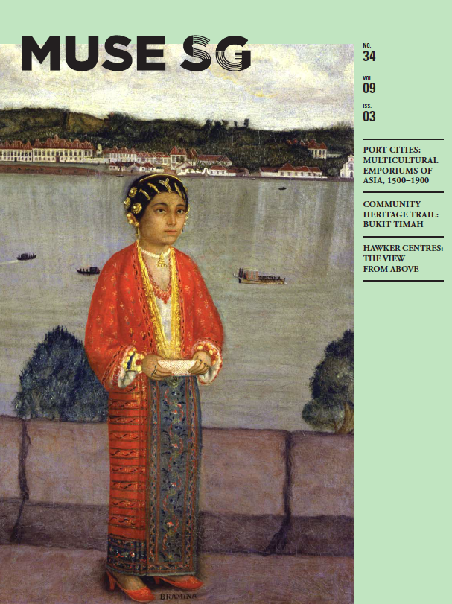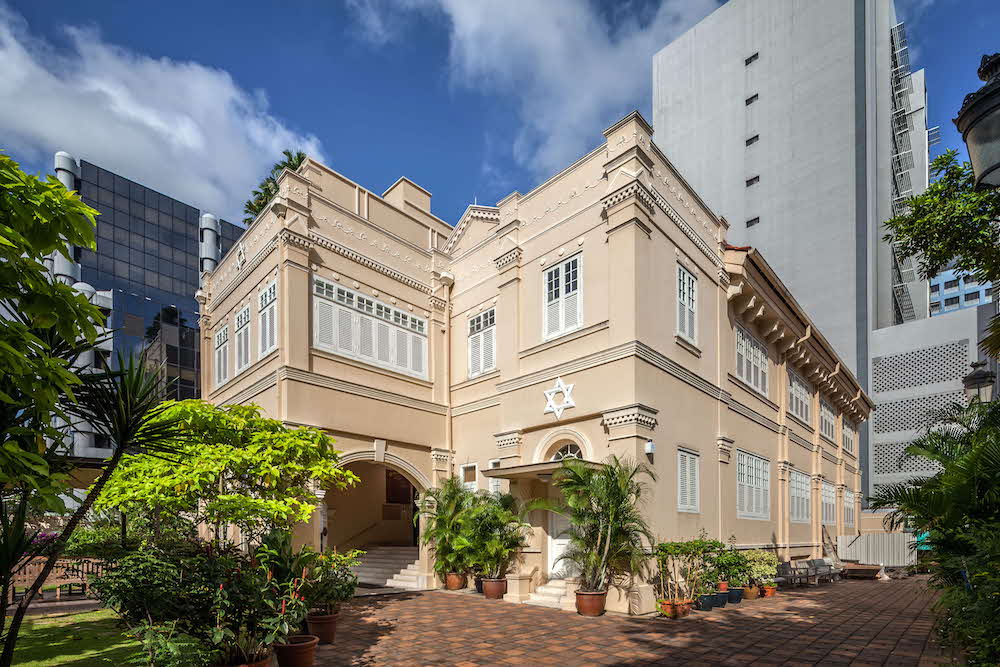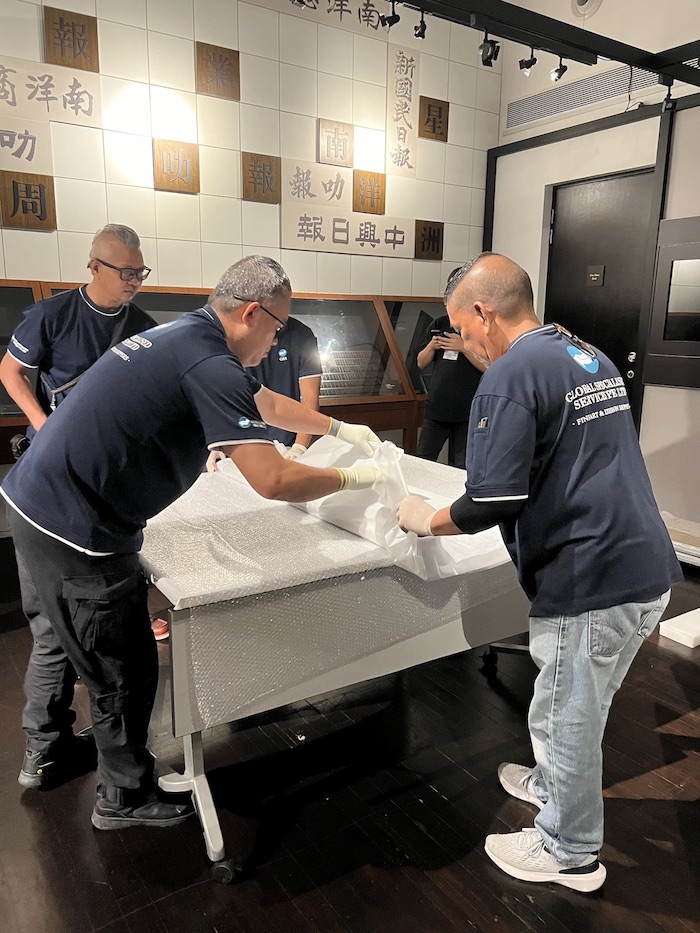+65 Volume 2 – 2022
Text by Karen Ho Wen Ee
Read the full +65 Vol. 2
My evening runs through Jurong take me through a network of factories. There
is an oil refinery a few kilometres away, with Jurong Island located just
beyond. Yet the sky here is no less blue than in any other neighbourhood, with
no fewer birds or trees. This clean air, however, belies Singapore’s
heavy reliance on industrialisation which has powered our economy since the
1960s. In fact, it is a testament to careful planning right from the early
stages of Singapore’s post-independence development.
 Jurong Hill and Jurong Industrial Estate, 1970. Collection of the
National Museum of Singapore, National Heritage Board.
Jurong Hill and Jurong Industrial Estate, 1970. Collection of the
National Museum of Singapore, National Heritage Board.
A clue to these early plans lies in the former office of Singapore’s
founding Prime Minister, Lee Kuan Yew. Near his desk, a cabinet houses a
series of large, detailed maps. One map, titled “Existing and Future
Areas Subject to Pollution”, dates to the early 1970s and indicates
existing and expected sites of pollution in Singapore such as Jurong and
Sembawang. The fact that this map was drawn up and hung in Mr Lee’s
office indicates that the issue mattered greatly to him, even during the
initial stages of Singapore’s industrialisation. What prompted this
focus on pollution, and what was done about it? This article explores how
Singapore approached and tackled this environmental challenge during our early
nation-building years through the establishment of the Anti-Pollution Unit.
 Map titled “Existing and Future Areas Subject to Pollution”
located in the former office of founding Prime Minister Lee Kuan Yew,
1970s. Courtesy of Prime Minister’s Office.
Map titled “Existing and Future Areas Subject to Pollution”
located in the former office of founding Prime Minister Lee Kuan Yew,
1970s. Courtesy of Prime Minister’s Office.
Anti-Pollution Unit: The Beginning
In the 1960s, Singapore embarked on a rigorous industrialisation programme to
boost economic development. As public housing became located closer to
industrial areas, residents complained about pollution such as smoke, dust,
and fumes that came from the factories. At that time, the responsibility of
enforcement was divided among two departments, the Public Health Engineering
Branch and Environmental Health Department. However, existing guidelines to
address air pollution were vague and regulation were ineffective.1
In February 1970, the government invited World Health Organisation consultant
Graham Cleary to Singapore to assess the situation and recommend an action
plan. His recommendations included establishing a specialised Air Pollution
Unit, developing legislation for air pollution control and factoring air
pollution considerations into urban planning.2
Although air pollution levels in Singapore were generally within global
standards and lower than other industrialised cities, there would be problems
down the road if prevailing growth rates were maintained.3 Lee Ek
Tieng, the first Head of the newly established Anti-Pollution Unit (APU),
recalled then-Prime Minister Lee being “very concerned” about the
pollutive impact of industrialisation after having read Cleary’s report.
Within two months of Cleary setting foot in Singapore, APU was established
under the Prime Minister’s Office (PMO) before formally gaining
Parliament’s stamp of approval the year after.4
 The Economic Development Board’s flatted factory at Tanglin Halt
Industrial Estate being constructed, with public housing in close
proximity, 1965. Ministry of Information and the Arts Collection, courtesy
of the National Archives of Singapore.
The Economic Development Board’s flatted factory at Tanglin Halt
Industrial Estate being constructed, with public housing in close
proximity, 1965. Ministry of Information and the Arts Collection, courtesy
of the National Archives of Singapore.
With other reforms to tackle land and water pollution such as the
Environmental Public Health Act, the Prevention of Pollution of the Sea Act,
and even the “Keep Singapore Clean” campaign, APU focused on
curbing air pollution, ultimately aiming to play a preventive rather than
retroactive role. Tan Guong Ching, who started his public service career in
APU as an engineer, later commented: “If we had not placed our control
measures right from the very beginning, Singapore would have been a totally
different place—a very polluted place.”5
“I was looking out of my office window at Pearl’s Hill one
day and I thought the rains were coming. But on taking a closer look, I
realised that the murkiness was smog … I asked myself: if Singapore
did not take this thing in hand now, what would happen in the
future?”
Lim Kim San, Singapore’s first Minister for the Environment, as
quoted in Forging a Greener Tomorrow
Finding Their Way
As tackling industrial pollution was just in its early stages worldwide,
little research data was available, especially for tropical climates like
Singapore’s. The Unit thus had to conduct its own experiments to measure
the impact of air pollution here and find its own solutions. For instance, it
needed to find out whether temperature inversions—a
phenomenon where cold air is trapped under warmer air, keeping pollutive
particles trapped as well—occurred at night in Singapore,
as in temperate climates. To measure this, the team attached temperature
sensors along the chimney of the Senoko Power Station in Sembawang, day and
night. They found that temperature inversions did indeed occur in Singapore,
and revised the guidelines for chimney heights to ensure that any pollutive
emissions would not remain trapped.7 While APU’s methods were
initially manual and rudimentary, Joseph Hui, who joined APU as an engineer in
1977 and eventually became Deputy CEO of the National Environment Agency,
remarked that being closer to the ground gave the team “a sense of
satisfaction for being able to protect the environment”.8
 Liu Kang, Working at the Brick Factory, 1954. Oil on canvas, 97.8 x 128.6 cm. Gift of the artist’s
family. Collection of National Gallery Singapore.
Liu Kang, Working at the Brick Factory, 1954. Oil on canvas, 97.8 x 128.6 cm. Gift of the artist’s
family. Collection of National Gallery Singapore.
 Visitors at the “Keep Singapore Pollution Free” campaign
exhibition held at the Singapore Conference Hall, 1971. Ministry of
Information and the Arts Collection, courtesy of the National Archives of
Singapore.
Visitors at the “Keep Singapore Pollution Free” campaign
exhibition held at the Singapore Conference Hall, 1971. Ministry of
Information and the Arts Collection, courtesy of the National Archives of
Singapore.
The team also relied strongly on the global community to build up its
expertise. As the first head of APU, Lee Ek Tieng completed a seven-month
attachment in New Zealand and Australia in 1970 before returning to assume his
position full-time. Subsequently, Singapore continued to engage these two
nations closely, and as the three countries engaged in mutual dialogue,
solutions such as new pollution control technology were jointly developed.9
Standing Their Ground
Having consulted advisors and gathered data, APU prepared to implement new
anti-polluting regulations. Although these measures were unpopular with many
investors and firms, the authority accorded to APU as an agency under
PMO’s ambit enabled it to stand its ground.
Before proper legislation was introduced, APU had sought assistance from other
departments such as the Ministry of Labour and Registry of Vehicles to manage
emissions; however, enforcement often seemed like a “cat-and-mouse
game” due to polluters’ evasive tactics and shortage of regulatory
staff.10 The Clean Air Act and Clean Air (Standards) Regulations,
passed in 1971 and 1972 respectively, subsequently gave the Unit greater
power. APU would screen all factories with potentially pollutive impact before
allowing them to operate, and industries whose pollutive risk was too great
were turned down. For example, an attractive offer by an Australian firm to
set up an iron and steel plant was rejected. Existing factories also had to
comply with new regulations by installing pollution control equipment such as
venturi scrubbers, or by changing practices such as inefficient combustion
techniques and pollutive waste management methods.11
To keep residential neighbourhoods pollution-free, APU also developed a zoning
system that sorted industries according to their pollutive
impact—a new strategy that was subsequently implemented by
other countries.12 Industries were categorised by indices that
evaluated the amount of noise generated, the pollution potentially produced
and the type of equipment involved. “Light Industries” that did
not create air, water, or noise pollution could be situated near homes, while
“Special Industries”—which ranged from the
manufacture of ceramic tiles to petroleum refineries—faced
pollution control measures and were situated in dedicated zones.13
Some existing factories were forced to relocate, but the advantage was that
those with outdated equipment moved into newer premises with better pollution
control facilities.14
On how companies reacted to APU’s guidelines, Tan Guong Ching recalled
in an interview with the Founders’ Memorial: “Of course they
didn’t like it. It meant cost to them.”15 Indeed, the
new measures were an impediment to foreign investment and some industries
moved out of Singapore altogether. Still, then-Minister for the Environment
Lim Kim San understood that the costs of pollution could be even greater than
the economic benefit from these investments.16
 Minister for Health Chua Sian Chin speaking at the opening of “Keep
Singapore Pollution Free” campaign held at the Singapore Conference
Hall, 1971. Ministry of Information and the Arts Collection, courtesy of
the National Archives of Singapore.
Minister for Health Chua Sian Chin speaking at the opening of “Keep
Singapore Pollution Free” campaign held at the Singapore Conference
Hall, 1971. Ministry of Information and the Arts Collection, courtesy of
the National Archives of Singapore.
 Minister for National Development S. Dhanabalan at Senoko Power Station,
1992. Ministry of Information and the Arts Collection, courtesy of the
National Archives of Singapore.
Minister for National Development S. Dhanabalan at Senoko Power Station,
1992. Ministry of Information and the Arts Collection, courtesy of the
National Archives of Singapore.
The fact that APU reported directly to the Prime Minister also gave it the
authority needed for enforcement. In an interview with the National Archives
of Singapore, Lee Ek Tieng recounted an incident where a large petrochemical
company, upon needing to install a ground flare system for pollution control,
“complained to everybody, every minister… they even appealed to
Goh Keng Swee.” Lee added, “Goh Keng Swee was very clever, left it
to the Prime Minister. That was it. And they never got away. They finally had
to put a ground flare.”17
“Actually environmental pollution was quite a new topic … we
were among the pioneers of pollution control. So we had a lot of, shall I
say, experimentation … we thought through the problems and
solutions ourselves.”
-
Tan Guong Ching, in a 2007 interview with the National Archives of
Singapore18
 Minister for Finance Hon Sui Sen checking out Philips’ SO2 air
pollution monitor, which was presented by Philips Singapore during the
opening of Philips Machine Factory and Telecommunications Factory in
Jurong, 1973. Ministry of Information and the Arts Collection, courtesy of
the National Archives of Singapore.-
Minister for Finance Hon Sui Sen checking out Philips’ SO2 air
pollution monitor, which was presented by Philips Singapore during the
opening of Philips Machine Factory and Telecommunications Factory in
Jurong, 1973. Ministry of Information and the Arts Collection, courtesy of
the National Archives of Singapore.-
“We are here interested in prevention before the situation gets out
of hand … It is therefore not pre-mature to control air pollution
now as some people think it is in Singapore. Industrialists and other
polluters must think and accept that air pollution control is part of
their responsibility.”
Anti-Pollution Unit, in a 1971 publication titled Air Pollution in
Singapore
 Opening of Pan-Malaysia Industries Ltd’s plywood factory at Jurong
Industrial Estate, 1964. Ministry of Information and the Arts Collection,
courtesy of the National Archives of Singapore.
Opening of Pan-Malaysia Industries Ltd’s plywood factory at Jurong
Industrial Estate, 1964. Ministry of Information and the Arts Collection,
courtesy of the National Archives of Singapore.
 Then-Head of APU Lee Ek Tieng at a laboratory during his attachment in
New Zealand, 1970. Courtesy of Archives New Zealand.
Then-Head of APU Lee Ek Tieng at a laboratory during his attachment in
New Zealand, 1970. Courtesy of Archives New Zealand.
 Poster titled “Stop Pollution: For a Clean, Healthy
Singapore”, 1977. Ministry of the Environment Collection, courtesy
of the National Archives of Singapore.
Poster titled “Stop Pollution: For a Clean, Healthy
Singapore”, 1977. Ministry of the Environment Collection, courtesy
of the National Archives of Singapore.
Conclusion
APU’s establishment in 1970 marked the beginning of greater
environmental awareness and action in Singapore. In 1972, Singapore became one
of the first countries in the world to form a ministry dedicated to the
environment, under which APU was eventually subsumed in 1983.20
In Singapore’s early post-independence years, environmental protection
was more about understanding the impact of pollutive activity and keeping
these effects at bay. Recent conversations have moved towards the protection
of wildlife and nature from human activity and the sustainable use of
resources. While Singapore today looks to greening and reducing overall
environmental impact, APU’s spirit of experimentation and collaboration
remains ever-relevant. The Unit’s persistence in implementing
anti-pollution measures paid off in the clean environment we enjoy today;
similarly, one can expect the present generation’s commitment to
furthering environmental consciousness to have a palpable impact on our
future.
Karen Ho Wen Ee is a Yale-NUS History graduate with an interest in the
stories that make up Singapore. She currently works at a media monitoring
firm and embarks on writing projects in her spare time. This article was
written when she was Assistant Manager (Curatorial and Engagement) at the
Founders’ Memorial.
















